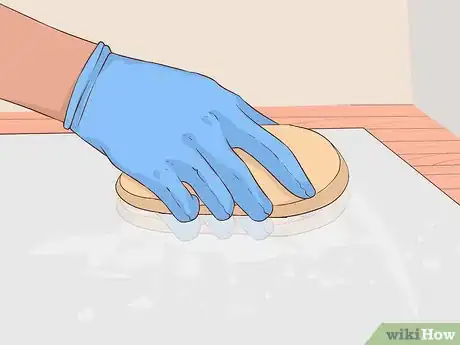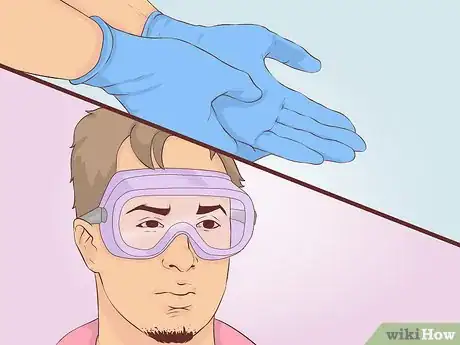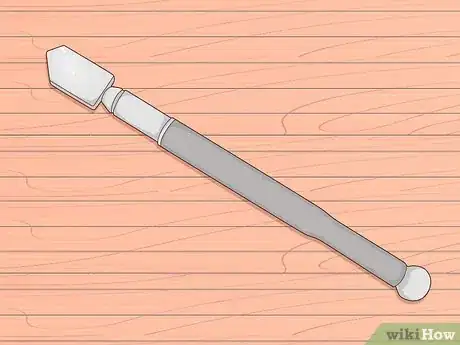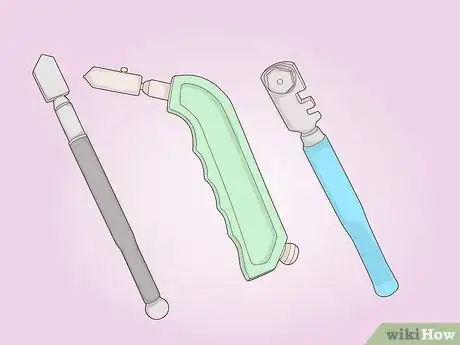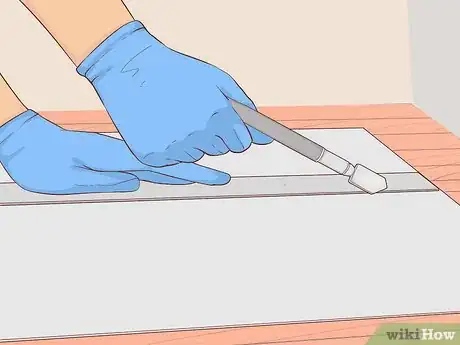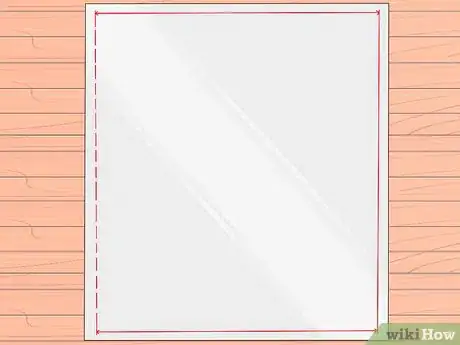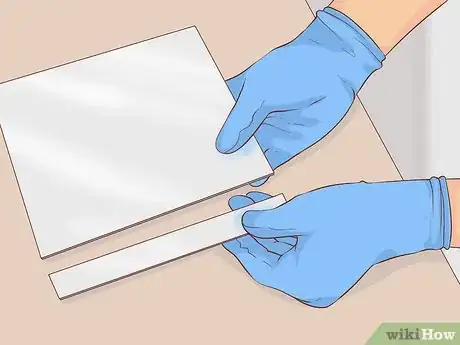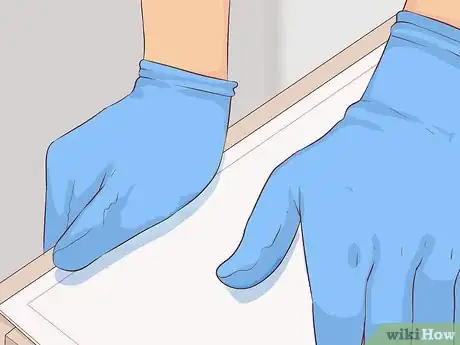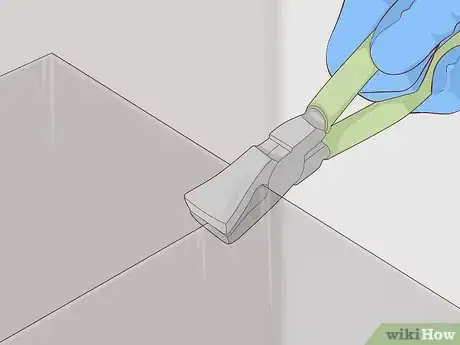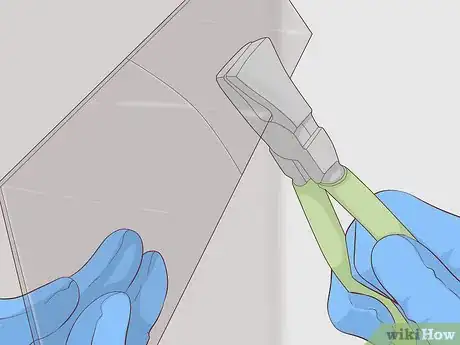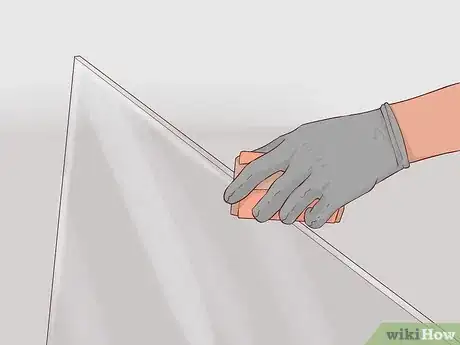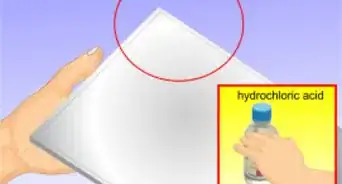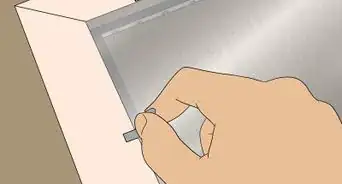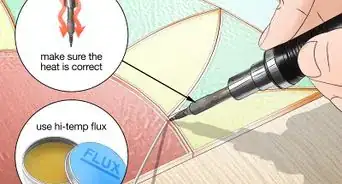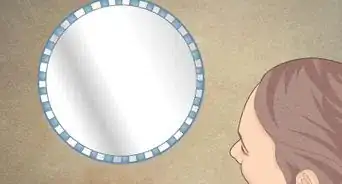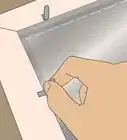This article was co-authored by wikiHow staff writer, Amber Crain. Amber Crain has been a member of wikiHow’s writing staff for the last six years. She graduated from the University of Houston where she majored in Classical Studies and minored in Painting. Before coming to wikiHow, she worked in a variety of industries including marketing, education, and music journalism. She's been a radio DJ for 10+ years and currently DJs a biweekly music program on the award-winning internet radio station DKFM. Her work at wikiHow supports her lifelong passion for learning and her belief that knowledge belongs to anyone who desires to seek it.
wikiHow marks an article as reader-approved once it receives enough positive feedback. In this case, 100% of readers who voted found the article helpful, earning it our reader-approved status.
This article has been viewed 460,769 times.
Learn more...
Learning how to cut mirror yourself has many benefits. You can create any design or shape you desire without settling for what's available on the market. You can also save money on expensive mirror pieces since you can style them yourself. Cutting mirror is actually a misleading term, as you will not be cutting so much as performing what is called a controlled break. In this process, you will score, or scratch, the surface of the mirror where you want to cut it. This creates a weak point in the glass. Once you apply a little pressure along the scored line, a clean break will occur.
Steps
Organizing the Project
-
1Select a sturdy uncut mirror for your project. If you want to custom cut a mirror, almost any piece will do – you can purchase uncut mirror glass from a hardware store or repurpose something you already have. Avoid cutting mirrors that are already severely chipped or cracked in multiple places. A mirror in bad condition may not be able to withstand the cutting process and shatter while you’re working with it.
- If you’re looking for another source to buy uncut mirror, look for specialty shops that deal specifically in mirror and glass.
- It may be helpful to purchase a few pieces of inexpensive mirror to practice on. Try single-strength window glass, since it is easier to cut and usually the least expensive.
-
2Clean and dry the mirror thoroughly. Use glass cleaner or rubbing alcohol and a microfiber cloth to wipe down the mirror’s surface. Clean it thoroughly – you need it to be as spotless as possible, because even the slightest speck of dirt or dust can cause interruptions during the scoring process. This may result in the glass chipping or breaking.[1]
- Use another microfiber cloth to wipe the surface down once more to ensure the mirror is completely dry before you begin.
Advertisement -
3Wear protective gear. During the scoring and breaking process, tiny shards of glass will be discharged. These could potentially get into your eyes. It’s very important to wear some kind of eye protection or safety goggles when you’re working with glass. Don’t rub or touch your eye area while you’re working. Wear protective gloves, especially when handling freshly cut glass – the edges will be very sharp.[2]
- Avoid wearing open-toed shoes or sandals.
- If you end up with a glass splinter, try to remove it by placing a sticky piece of tape over it and then whipping it off quickly. If that doesn’t work, use tweezers.
Scoring the Mirror
-
1Choose a quality glass scoring tool that meets your needs.[3] Most scoring tools feature a carbide cutting wheel on the end, which scratches the glass, and it is attached to some kind of handle. These tools are sometimes referred to as wheel-cutters. The wheels come in different diameters, with the smallest ones being best for detailed work. Wheel-cutters are relatively inexpensive, so it’s worth it to get one of higher quality.
- Look for scoring tools that have a sturdy design and a true carbide wheel. The cheaper tools can cost as little as five dollars. Those of higher quality are usually closer to twenty.
- You can get glass scoring tools at craft shops and hardware stores. Hardware stores usually carry the more expensive, sturdier models.
-
2Select a scoring tool that can best handle your design. Some scoring tools are meant to score straight lines and others will score curved lines. Select your tool according to the design you have in mind for your mirror.[4] The different handle shapes offer a variety grips. Choose what’s most comfortable for you to hold.
- If you have a very small job to do, look for a steel-wheel cutter. They work as well as the carbide wheels, and are even cheaper.
- If you are looking to cut a lot of mirror, invest in the self-oiling mirror cutter. It can last longer than other cutters, and is usually easier to use.
-
3Measure and mark your cut lines with a straight edge. To make a clean break, your measurements and cut lines need to be as precise as possible. Use a straight edge to mark your cut lines on the mirror’s surface. Mark the cut line with a sharpie or white crayon. The cut line will be your guide so that you can accurately run the scoring tool over it in one continuous motion.
-
4Place your scoring tool at the beginning of your first cut line. Put your mirror on a hard, flat surface that is free of debris. Hold the scoring tool vertically in your hand and line the wheel up at the beginning of your first cut line. Place the straight edge right beside the line so you can score along right next to it. This will give you the straightest, most accurate results.
-
5Apply a slight downward pressure while rolling the tool along the line. With most mirrors, you should hear a screeching sound if you are doing it correctly. If you don't hear that sound, you aren't pressing down hard enough. If you press too hard, you will notice tiny chips collecting around the score. These may get under your wheel and damage or dull your cutter, so brush them away immediately if you see them.
-
6Score the remaining cut lines. Continue scoring the mirror until you have completely outlined your intended design. Stop every other score or so to brush away glass shards that have collected on the mirror’s surface and on your work surface. Leaving glass chips around while you’re in the midst of scoring can interrupt the accuracy of your cut lines and damage the carbide wheel on your scoring tool.[11]
- For best results, try to keep your work space as debris-free as possible throughout the process.
Breaking the Mirror
-
1Use your hands to break a small mirror down the scored line.[12] There are a number of ways to cleanly break the mirror. One of the easiest ways is with your hands, although it’s not always the most ideal, especially if you are working with a very large piece of mirror. If the mirror is small enough for you to hold, firmly grasp it in both hands and place one thumb on each side of the first score line. Press down with both thumbs simultaneously, taking care to do so with equal pressure.[13]
- Quickly make a snapping motion with your wrists and the mirror should break crisply along the score line.
- Always wear protective gloves when you’re breaking glass. The score lines render the glass unstable and sometimes it can shatter in ways you aren’t expecting.
-
2Snap larger score lines by applying pressure on a flat surface.[14] Place the mirror, scored-side down, on a soft and flat surface. Use your hands to press down on the unscored side, applying pressure along the score line. The glass should cleanly snap. You can also place the mirror on the edge of a flat surface, making sure to line up the score line with the edge. Use your hand to press down on the side of the glass that is hanging over the edge until you see the glass snap crisply.[15]
-
3Break the glass along the score line with running pliers. If you feel uncomfortable breaking the mirror with your hands, or if the piece of glass is too large to do it that way, use running pliers. Place them so the bottom jaw touches the score on your mirror. The top jaw should touch the mirror about 1/2 inch (1.3 cm) on either side of the score line. Squeeze the pliers, which will cause them to separate, and the pressure will widen the score line. This widening will cause the score to crack along the rest of your line in a very controlled breaking pattern.[16]
- If you’re breaking a long score line, you might want to apply the pliers gently at one end, until you hear a very faint clicking sound. Then turn the mirror around and do the same thing on the other end of the line. This will cleanly complete the break at the edges.
-
4Use running pliers and a springy surface to break curved score lines. For scores that have multiple curves, turn the mirror upside down on a springy surface, such as a piece of foam or cardboard. If the curve isn't very dramatic, press down on the score line with your thumb, which will cause the break. However, running pliers are the best to use on curves and semi-circles. If you're cutting mirror with lots of curves, invest in running pliers and the breaking process will go much more smoothly.
-
5Sand and seal the edges of your newly cut mirror (optional). If you’re placing your mirror in a frame so that the raw edges won’t be visible, this is probably unnecessary (although you can still do it if you like). Sand down the edges with sandpaper, then apply mirror edge sealant or some other hermetic coating to the edges. You can find these materials at any hardware store. You can also use clear fingernail polish and get similar results.[17]
Community Q&A
-
QuestionDo I cut the mirror facing up on mirror side or bottom?
 Community AnswerStep 3 says: "Place your wheel cutter vertically, or straight up and down, on the reflective side of the mirror." So, this means mirror side up.
Community AnswerStep 3 says: "Place your wheel cutter vertically, or straight up and down, on the reflective side of the mirror." So, this means mirror side up. -
QuestionHow would I cut a 7 1/2" x 5 1/2" rounded corner rectangle shape mirror?
 Community AnswerUse a glass scoring tool that is designed to cut curved lines.
Community AnswerUse a glass scoring tool that is designed to cut curved lines. -
QuestionHow you do it without a wheel cutter?
 Community AnswerIt depends on the size and thickness of the glass. There are simplistic methods you can use for small pieces of glass, like using string, wire and even scissors. For very large and thick pieces of glass, you may need a blowtorch.
Community AnswerIt depends on the size and thickness of the glass. There are simplistic methods you can use for small pieces of glass, like using string, wire and even scissors. For very large and thick pieces of glass, you may need a blowtorch.
Things You'll Need
- Mirror pane
- Self-oiling mirror cutter
- Running pliers
- Mirror edge sealant, hermetic coating, or clear fingernail polish
- Foam or cardboard (optional)
References
- ↑ http://www.viewalongtheway.com/2012/10/how-to-cut-mirror-or-glass/
- ↑ http://www.clearwaterglass.com/Tutorials/CuttingGlass.html
- ↑ http://sawdustgirl.com/how-to-cut-a-mirror/
- ↑ http://www.clearwaterglass.com/Tutorials/CuttingGlass.html
- ↑ http://www.viewalongtheway.com/2012/10/how-to-cut-mirror-or-glass/
- ↑ http://www.clearwaterglass.com/Tutorials/CuttingGlass.html
- ↑ http://www.clearwaterglass.com/Tutorials/CuttingGlass.html
- ↑ http://sawdustgirl.com/how-to-cut-a-mirror/
- ↑ http://sawdustgirl.com/how-to-cut-a-mirror/
- ↑ http://www.clearwaterglass.com/Tutorials/CuttingGlass.html
- ↑ http://www.clearwaterglass.com/Tutorials/CuttingGlass.html
- ↑ http://sawdustgirl.com/how-to-cut-a-mirror/
- ↑ http://www.clearwaterglass.com/Tutorials/CuttingGlass.html
- ↑ http://sawdustgirl.com/how-to-cut-a-mirror/
- ↑ http://www.clearwaterglass.com/Tutorials/CuttingGlass.html
- ↑ http://www.clearwaterglass.com/Tutorials/CuttingGlass.html
- ↑ http://www.viewalongtheway.com/2012/10/how-to-cut-mirror-or-glass/
About This Article
To cut a mirror, first use a sharpie and a straight edge to mark where you want it cut. Then, score the mirror by putting downward pressure on your wheel cutter as you trace the cut lines. If you don't hear a screeching sound, try pressing down harder on the wheel cutter. When you’ve scored all the cut lines, you can use your hands or a pair of running pliers to break the mirror along the lines. Just be sure to wear protective gloves and eyewear when you score and cut the mirror to protect yourself from shards and sharp edges. To learn how to pick a cutting wheel that’s right for you and the projects you have in mind, keep reading!

